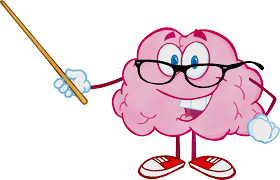
After creating Brain Camp for Kids’ curriculum and other logistics, such as registration and advertising, (to learn more about how I did this, read this article) it was time for me to start running Brain Camp for Kids.
But first, I wanted to make sure that first to third grade students would actually enjoy the activities that I had created. So, to see how students would react to my curriculum, I hosted a trial session with some family friends. Some activities, like the Brain Song, went extremely well: the kids were engaged and enjoyed practicing the song until they could sing it from memory. Other activities, like the explanatory videos, didn’t. As the kids lost interest, I noticed the color on their faces rapidly change as they clicked through other tabs on their computers. So, I created a hands-on brain experiment—using eggs to demonstrate the importance of cerebrospinal fluid—that became a camp highlight. One student even brought a book of facts to class, exclaiming, “Ms. Ritika, tell us brain fun-facts!” Seeing the other students’ faces light up, I incorporated five fun-facts at the beginning of every class.
Running the trial session was a hugely beneficial learning curve for me. Not only was I able to fix and adapt activities that the kids did not enjoy, but also I was able to work out many logistical problems. For example, I had never hosted Zoom meetings prior to Brain Camp, and I didn’t know that when screen sharing, sound is not automatically shared either. So, when I first showed my trial session students the Brain Song, they weren’t actually able to hear the song, and I had no idea! However, soon I figured out the technicalities of Zoom and the rest of the trial session proceeded smoothly. Such learnings were crucial to me and greatly helped me when I ran the rest of the summer camp sessions.
After hosting my trial session, I was ready to start running the actual sessions of my camp, using what I had learned from the trial session. Throughout each session of the camp, I faced challenges, such as getting students to participate and unmute themselves or focusing students if their surroundings were distracting. I learned that the key to both problems was to create highly interactive activities where I could hear the students’ voices as much as they heard mine. One extremely successful activity was the Brain Song. Just like in the trial session, the students during the actual sessions of Brain Camp loved learning stanza after stanza of the Brain Song each day and singing the entire song on the last day of the camp.
After weeks of running Brain Camp, I looked forward to seeing smiles on kids’ faces as they perfected an off-key rendition of the Brain Song as well as the pride in their eyes as they showed me their coloring worksheets and explained to me what a neuron was. The camp was so successful that I added additional sessions to accommodate more kids. Despite the challenges, I transformed an uneventful quarantine into a summer of sharing my passion for neuroscience with 45 children and raising $1340 for COVID-19 relief through the Get Us PPE organization.